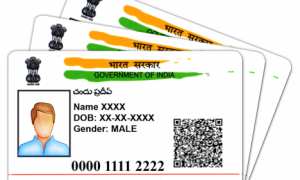Managing a Sukanya Samriddhi Yojana (SSY) account can become more convenient when you move it from a post office to a bank. Whether you’re seeking easier accessibility or better services, transferring your SSY account is a simple process. Here’s a step-by-step guide to help you navigate the transfer seamlessly.
Why Transfer Your SSY Account?
Transferring your SSY account from a post office to a bank offers several advantages:
Accessibility: Banks often have more branches and ATM facilities, making deposits and account management more convenient.
Digital Access: Many banks offer online and mobile banking for SSY accounts, enabling you to check balances and transactions anytime.
Better Customer Support: Banks usually provide faster responses and additional services compared to post offices.
Steps to Transfer Your SSY Account
1. Visit the Post Office
Start by visiting the post office where your SSY account is currently held. Bring the following documents:
- SSY passbook
- KYC documents (e.g., Aadhaar card, PAN card)
- A written transfer request form (available at the post office)
Inform the staff of your intention to transfer the account to a specific bank. They will guide you through the initial steps.
2. Submit a Transfer Request
Complete the transfer request form and submit it along with your passbook and required documents. Ensure all information is accurate, including the details of the bank branch where you wish to transfer the account.
Read More: Can You Make Aadhaar Card Online? Know The Enrolment Process Here
3. Processing by the Post Office
The post office will:
- Verify your documents
- Prepare transfer documents, including:
- A certified copy of your account opening form
- Your specimen signature card
- An account statement
- Issue a cheque or demand draft for the balance amount in your SSY account
These documents, along with the transfer letter, will be sent to your chosen bank branch.
4. Collect the Transfer Documents
After the post office has processed your request, they will give you a set of documents to submit to the bank. These include:
- A transfer letter addressed to the bank
- Your SSY passbook
- Any supporting documents
5. Visit the Destination Bank
Next, visit the bank branch where you want to transfer your account. Submit the transfer documents along with:
- Updated KYC documents (if required)
- A recent photograph
- Specimen signatures
- The bank will verify the documents and process your request.
Read More: Beware Of E-KYC Scams For Ration Cards: Learn The Right Process
6. Activate Your Account
Once the transfer is complete, the bank will issue a new SSY passbook reflecting your updated account details and transferred balance. You can now manage your SSY account through the bank’s facilities, including online banking if available.
Important Tips for a Smooth Transfer
Check Fees: Some post offices may charge a nominal transfer fee, usually around ₹100. Confirm the charges before proceeding.
Keep a Record: Retain copies of all documents submitted for future reference.
Plan for Processing Time: The transfer may take a few weeks, so initiate the process well before any upcoming deposits.
Coordinate with the Bank: If your chosen bank offers online services for SSY, ask about the registration process once the transfer is complete.
Key Benefits of Transferring to a Bank
Convenient Deposits: Banks accept deposits through cash, cheque, or online transfers.
Online Tracking: Many banks allow you to track your SSY account balance and history digitally.
Additional Services: Banks often provide better infrastructure and services, such as automated reminders for account-related deadlines.
Transferring your Sukanya Samriddhi Yojana account from a post office to a bank can make managing your child’s savings plan much easier. By following this guide and staying organized, you’ll ensure a hassle-free transfer process. Remember, this small step can lead to significant convenience and better access to your savings in the long run.





































